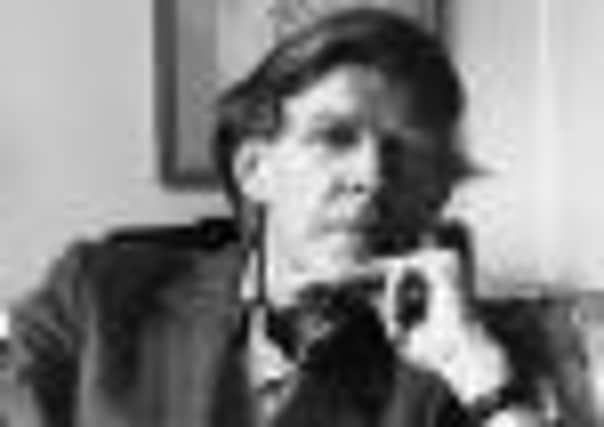Herbert Whone


Mr Whone, generally known as Bert, was born in Bingley, and it was that part of the West Riding which provided a rich seam of inspiration for his later paintings.
He had a younger sister, Muriel, and their parents worked in the cloth mills, their father as a machine minder and later factory manager, and their mother as a cloth mender.
Advertisement
Hide AdAdvertisement
Hide AdMrs Whone had ideas for her children’s “improvement”, and encouraged all kinds of cultural and literary endeavours throughout their childhood. It was she who stood over the young Bert Whone while he practised the violin.
He was artistically aware from quite a young age, and began to take photographs around the age of eight. He began drawing and sketching in his teens.
He was bright enough to go to Bingley Grammar School, and subsequently to the Royal Manchester College of Music, and Manchester University. Between 1944 to 1947 he did his National Service in the RAF.
At university, he met Margery Reed, and they married in Bakewell, Derbyshire, in 1952, beginning their married life in London, where Mr Whone played for a year in the orchestra of the Royal Opera House, Covent Garden, and the BBC Symphony Orchestra. They then moved to Glasgow so that he could take up his job as sub-leader of the Scottish National Orchestra.
Being a professional musician was not enough, however.
Advertisement
Hide AdAdvertisement
Hide AdHe was already a gifted photographer when, in 1958, his interest in the visual arts took him into painting. This new development brought a series of one-man shows, first in Glasgow where he depicted the changing face of that city, and later in Yorkshire, where he depicted the equally changing face of the West Riding industrial landscape.
He had returned to Yorkshire in 1965 to teach at the then Huddersfield Polytechnic Music School.
He became leader first of the Yorkshire Sinfonia and then of the Guildhall Orchestra in York, this from 1981 to 1993.
After 1973, painting gave way to the writing and publication of nine books on different subjects. These included three books on music of which The Simplicity of Playing the Violin became a classic in violin literature. Three others were essentially photographic books – The Essential West Riding, Touch Wood, A Journey Among Trees, and Fountains Abbey, accompanied by historical documents.
Advertisement
Hide AdAdvertisement
Hide AdFrom 1984 until 2001 he was a volunteer guide at Fountains for the National Trust. Erudite, unusual, always enthusiastic, and certainly not a conventional NT guide, he was like the Pied Piper, by the end of his tours having collected a large gathering of followers.
Another of his books, Glasgow in Transition, is a collection of his paintings of Glasgow done in the 1960s. Other books range from church symbolism to poetry – Nursery Rhymes for Adult Children.
After a period in the 1970s in which he drew and photographed trees, he turned to painting again and held two one-man shows in 1989 and 1995 on the theme of Fountains Abbey, at Fountains Hall. His show at Nunnington Hall in 2002 found him fascinated by the elemental power of water, observed whilst walking around the well-known falls of Yorkshire. This was followed by a retrospective exhibition in the Mercer Art Galley, Harrogate, in 2006.
Throughout, he continued to be regarded as one of the foremost teachers of the violin in the North.
Advertisement
Hide AdAdvertisement
Hide AdA man of gentle, compassionate wisdom, he counselled many, and many of his students remained in touch with him for decades.
Mr Whone is survived by his children Adam, Nicholas, Katrina, Helena, Hannah and six grandchildren.